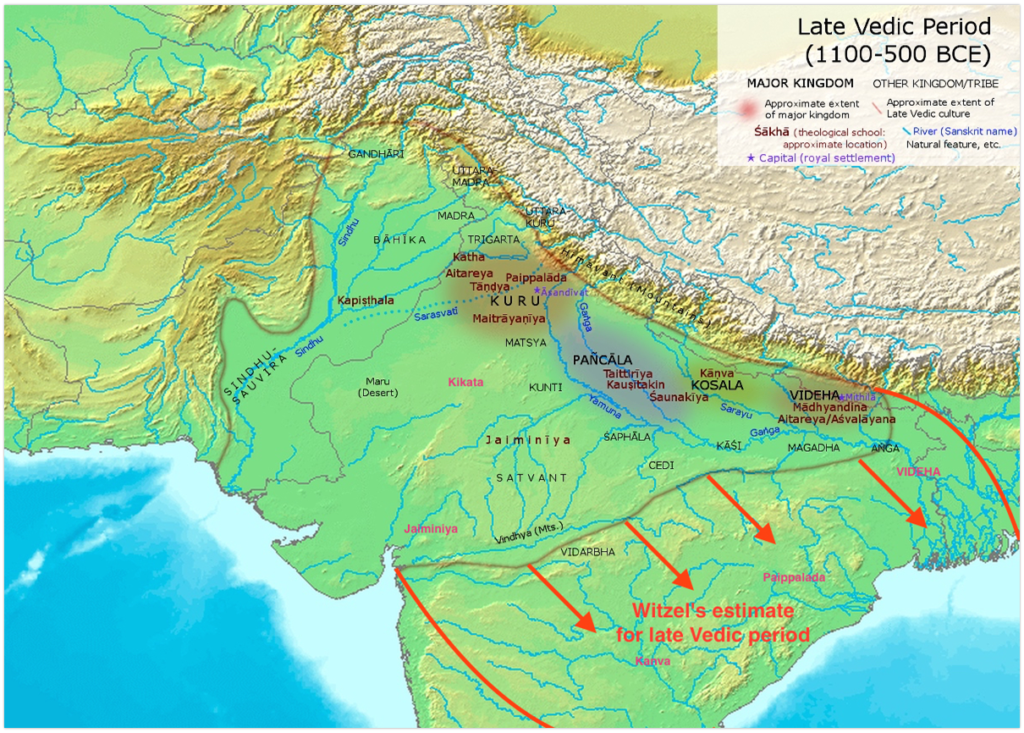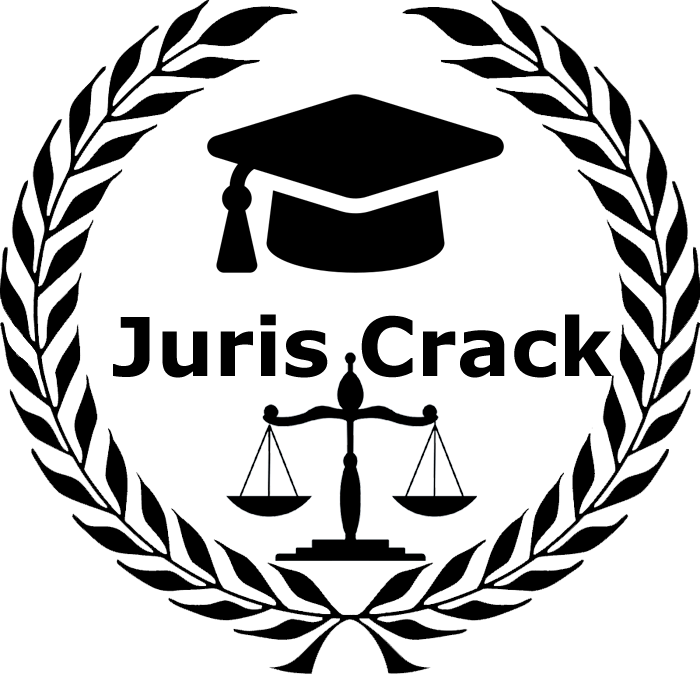During the Later Vedic Age the Aryans thoroughly subdued the fertile plains watered by Yamuna, Ganges and Sadanira.
They crossed the Vindhyas and settled in the Deccan, to the north of Godavari.

IRON age beginning in India •
Profound changes and development compared to early Vedic age
Sources- Later Vedas- Samveda, Yajurvada, Atharvaveda
Upanishads Aranyakas
Painted Gray ware pottery
Brahamanas • Prose commentaries of all four Vedas • 18 in number •
Most important is Satapata Brahamana •
Full of ritualistic formulae & explains social and religious meaning of rituals & sacrifices
Aranyakas
There were some sages dwelling in the forests who explained the Vedic sriptures to their pupils in the form of Aranyakas (Aranyaka means belonging to the forest) and they came to be known as “forest texts”.
They explain metaphysics and symbolism of sacrifice.
They are the forest books and were taught in the forests due to their magical powers.
They form the concluding part of Brahmanas.
Brahmanas
The Brahmanas are the prose commentaries on various Vedic hymns. They explain the Vedas in an orthodox way.
They explain the hidden meaning behind the hymns They are ritualistic by nature
They are expressive of the cause hetu). etymology (nirvachana), censure ( ninda). dount (samshaya) and injunction (vidhi).
Later Vedic Age – Geography
- Aryans moved eastwards and southwards
- References to Arabian sea Vindhyas
- Ganga Jamuna doab became main centre of civilisation
- Using iron instruments (1000-800 BC) they cleared jungles , killed wild animals and tilled the soil •
- Horses enabled them to move forward at brisk pace
Later Vedic Age – Social Life
Society in the Later Vedic Age came became increasingly complex and came to be divided into four Varnas – Brahmanas, Kshatriyas, Vaisyas and Sudras
Brahamanas: The growing cult of sacrifice enormously added to the power of Brahmanas, who performed various rituals and sacrifices for their clients. In the beginning, they were merely one of the sixteen classes of priests, but later on they overshadowed others.
Kshatriyas: They constituted the warrior class. Majority of the rulers belonged to this class.
Vaisyas: They were the agriculturists, cattle-rearers, traders, artisans and metal workers, which formed the bulk of population. In some texts, the Kshatriyas are represented as living on the tributes collected from the Vaisyas.
Sudras: They were the lowest in social hierarchy and were meant to serve the upper three varnas.
The upper three varnas were known as the Dvijas (twice born).
The upper three varnas were entitled to ‘upanayana’ or investiture with the sacred thread.
Education began with upanayana ceremony. Sometimes the girls were also initiated. The age of upanayana was 8 years for Brahamana. 11 for Kshatriya, and 12 for Vaisyas.
Certain sections of artisans such as Rathakara or chariot-maker enjoyed high status and were entitled to the sacred thread ceremony.
In Later vedic Age, polygamy was prevalent and there were instances of child-marriage.
The term Nagara appears for the first time in the Later Vedic Age, showing faint beginnings of town life.
- Gotra institution started- Gotra exogamy started
- Shudras were deprived of sacred thread ceremony & recitation of Gaytri Mantra •
- Ashram system developed – Jabal Upnishad
- Brahmcharya
- Grihastha
- Vanaprastha
- Sanyasa
Later Vedic Age – Polity
- Assemblies/Sabhas became less powerful and chief/Rajan gained dominance
- Women excluded from Sabhas and Samitis
- Tribes joined to form larger kingdoms ‘Rashtra’ – named after the dominant tribe
- kuru and Panchala were dominant tribes now (earlier Bharat)
- No standing armies but iron weapons developed
- Mahabharata war – land of Kurus – Kurukshetra
Administrative officers –
- Purohit – Priest
- Gramini – Head of villages
- Senani – head of warriors
- Ratnani – advisor to king
- Sangrahitri – Treasurer/Tax officer
- Bhagduha – Tax collector
Later Vedic Age – Economics
- Agriculture – main occupation – completely sedentary life now (Not nomadic)
- Wide variety of crops
- Iron instruments
- Oxen drawn plough
- Now land = property
- Urban centres like Hastinapur developed
- Guild system
- Gold silver and IRON mentioned
Later Vedic Age – Religion and Philosophy
- Indra, Agni – importance less
- Prajapati – more important
- Rudra – god of animals, destroyer
- Vishnu – minor god in Rigvedic age ,now protector of people
- Pushan – Protector of cows and god worshipped by Shudras
- Some evidences of Idol worship in very late Vedic age
- Worship based on more on Sacrifices (especially cattle) rather than simply prayers
- Yajaman – Performer of Yajna (sacrifice)
Rajasuya : To confer supreme power on him on Rajan to impress his people
Ashvamedha: Unquestioned control over area on which royal horse ran uninterrupted
Vajpeya: Chariot race in which royal chariot was made to win the race against his kinsmen








No comment